Today’s attempts to malign Haiti stand as only the latest in a long line of hegemony and oppression against this Caribbean island nation. January 1, 1804 is Haitian Independence Day, and Haitian attorney Ezili Dantò honors and remembers Janjak Desalin (Jean Jacques Dessalines), Haiti’s Liberator and founding father, as well as the indigenous army, and women who influenced him. Janjak’s ideals and legacy lives on – Nou la!
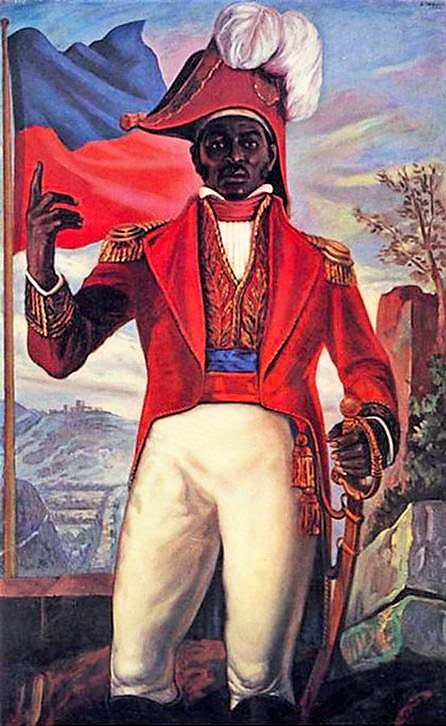

Jean Jacques Dessalines – The women who influenced him, his ideals and legacy remembered
By Ezili Dantò, Published at MargueriteLaurent.com
September 20th is the birthday of Haiti’s founding father, Jean Jacques Dessalines (born, September 20, 1758, assassinated October 17, 1806). Born a slave under European ideology and put in chains to serve France and the European nations in worldwide power, he lived to change the course of humanity. He did what Spartacus couldn’t and much more.
There is so much about our African and Haitian ancestors we don’t know because US/European modus operandi was about the destruction of Africa’s past, African identity and world history in order to build and create their own societies and future.
When I hear Haitians and now even some emboldened foreigners, talk about Haitians must forget 1804 and the triumphs of Jean Jacques Dessalines, the general of the native army of Haiti, stop referring to them and look to the future; when I see on Haitian forums discussing the mistreatment of Haitians in the Dominican Republic the advice that Haitians ought to stop talking about the 30,000 Haitians that Trujillo had slaughtered in 1937, I am reminded that the destruction of our African past, our Haitian reality, what Haitians witness to every nanosecond of the day is still the global US/European modus operandi. Haitian self-determination is being destroyed by UN occupation, paternalism, privatization, free trade agreements, debt, wage slavery and forced assimilation.
Haitians are asked to copy and paste what whites and their overseers see as their reality, their experience, and their history. But Jean Jacques Dessalines, in creating the nation of Haiti, broke from that modus operandi. He did not copy and paste what white minds saw as civilization, justice and democracy. Jean Jacques Dessalines looked at his own world and day to day experiences, took in what he could see with his own two eyes, what he could hear with his own ears, what he could envision with his own precious heart, his own unbowed soul and created a nation, a Haiti, that reflected that reality, that vision and the future that would best serve his people. His legacy has yet to be heralded. His great ideals still remain obscure, his humane vision of humanity and for peaceful and self-affirming co-existence still denied.
Haiti declared its independence from France on January 1, 1804. The American government refused to recognize the country until 1862. Thomas Jefferson, in 1799, referred to the leaders of Haiti’s violent overthrow of French colonial order as “cannibals of the terrible republic.” Haitian sovereignty, and the nationalist insurrections it inspired in the global South, was seen as an aberration from the Enlightenment’s racial ideal, a framing that has persisted for two centuries. — Doreen St. Félix in The New Yorker
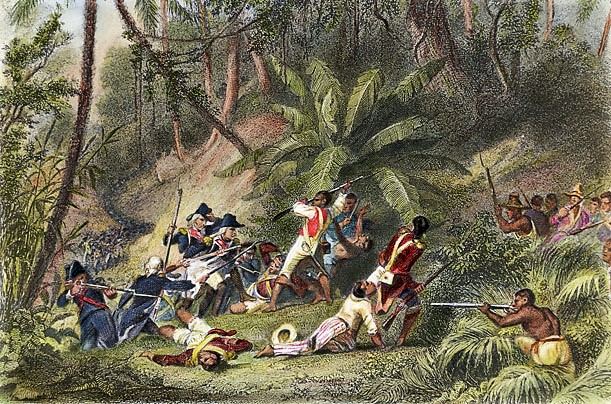

In fact, after the mulatto sons of France assassinated Dessalines, during both the administration of the mulatto generals, Petion and Boyer, Dessalines’ name was forbidden to be spoken in Haiti under threat of imprisonment. Dessalines’ assassination, two years after the creation of Haiti, was the first foreign-influenced coup d’etat in Haiti. The 2004 bi-centennial coup d’etat of Bush the son, was the 33rd coup d’etat to try to eradicate the influence of the Haitian revolution, which legally abolished slavery, forced assimilation, direct colonialism and the Triangular Trade in Haiti.
At Ezili’s Haitian Lawyers Leadership Network (HLLN), we recapture Dessalines’ three major ideals (Black is the color of liberty, Self-defense is a human right, Live free or die), his name for Haiti, its meaning, history, revelations, and explain why Dessalines was so ahead of his time and so threatening to the white nations. In the Ezili’s Free Haiti Movement, we set out October 17th, the day of Dessalines’ assassination to discuss Dessalines’ life, vision, ideals and what he represents to Haiti and the world.
Frederick Douglass in 1893 gave his “Lecture on Haiti” in Chicago, the city founded by Jean Baptiste Point du Sable, himself believed to have been born on the portion of Hispaniola that would later declare itself Haiti. In his talk, Douglass spoke of the ideological hazard that the world’s first free black republic might pose to the U.S., saying, “But a deeper reason for coolness between the countries is this: Haiti is black, and we have not yet forgiven Haiti for being black or forgiven the Almighty for making her black.”
Our history was so destroyed that it is only fairly recently that Haitians actually had a date for Dessalines’ birthday. Before, all we were taught was the date of his death. But Haitian scholars have done more work and now in Haiti, we have this day to celebrate. It is so very important this recapturing of our history, our people, what they witnessed to, how they reacted, what they created. We still have so little information. Still must rebuild. Still must put flesh, bone, blood and soul to those who were so destroyed, so corralled into ships and sold as property.
STORY: Frederick Douglass on the 4th of July: Injustice and Cruelty
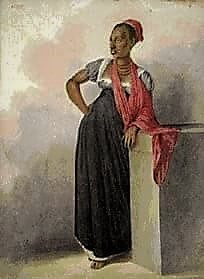

Gran Adbaraya Toya, Woman Warrior
We still don’t have enough information about Victoria Montou (known as “Toya”), the Haitian woman who taught the greatest warrior that ever lived how to fight in hand-to-hand combat and how to throw a knife. Gran Toya guided Dessalines in his youth and he called her “aunt.” She was an extraordinary warrior and commanded her own indigenous army. We still know so little about her. We know only that she taught Dessalines the physical maneuvers of effective hand to hand combat, how to shoot and how to throw a knife. We know she was old because she is affectionately called Gran Toya. Imagine her life! Imagine the inspiration she could be today to our young Haitian women. No.
Imagine the inspiration she could be to the world’s women and men! But our Black history was destroyed so we could be enslaved, so we could find nothing good in ourselves, our forefathers, their thinking. And still today, I’m reading on Haitian forums we should not resurrect the past, but move on because only today matters — with our collective Haitian persona so vilified, maligned and brutalized and with white heroes, white cultural hegemony ruling. On that ground, we are told we should deploy ourselves into this world.
This morning I was blessed to be a participant on a Radio Kajou interview celebrating the holy day that’s the birthday of Haiti’s forefather, Jean Jacques Dessalines and I learned from a colleague in that discussion that Dessalines’ mother was a woman named Marie Elisabeth. I did not know this. Until this morning’s panel when Haitian historian and scholar, Jafrikayiti said this, I did not know the name of Dessalines’ mother or that this enslaved African-Ayisyen, founder of the nation of Haiti, even had a mother who could be positively identified. Most of us are told our African ancestors were enslaved, we were sold as property, families separated and thus it’s impossible to know who gave birth to the which child. And that is that.
STORY: “Bleeding Kansas” and Stories of the Underground Railroad
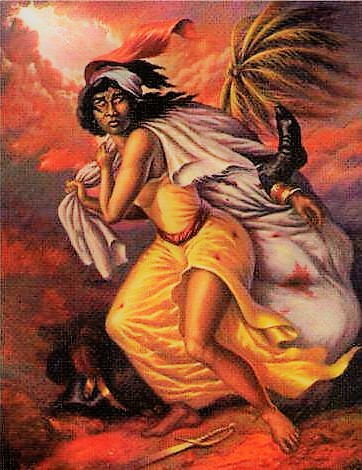

Marie Sainte Dédé Bazile
But there are Haitian scholars unearthing our stories, our stolen identities and lives. This job is ours to do. I want to know more, to empower more. I want to know more about Marie Sainte Dédé Bazile, (known as Defile or Défilée), the Haitian woman who gave Dessalines a proper burial after he was chopped up in pieces and left in the Pont Rouge bridge as garbage. The old historians of Haiti called her crazy Defile, as if who would give honor and burial to the father of a Black Nation.
Yet, Defile, an enslaved woman who freed herself, thought for herself, took action even some warrior men may have been hesitant to take, and left us a legacy of courage. Manman Defile went against the mob violence and group thinking, preserved our nation’s dignity, faced the powers of the mulatto generals, and faced France to honor our fallen founding father. Who was the woman named Defile? Really. How did she get so much focus, courage, and so much gumption? We want to know so we can tell the next generation of Haitian the non-colonial narrative on Haiti. (See, Kouwòn pou Defile.)
Douglass observed in his 1893 speech that the American mistreatment of Haiti demonstrated how “our boasted civilization is far behind all other nations.” His judgment has not yet been disproven. — Doreen St. Félix
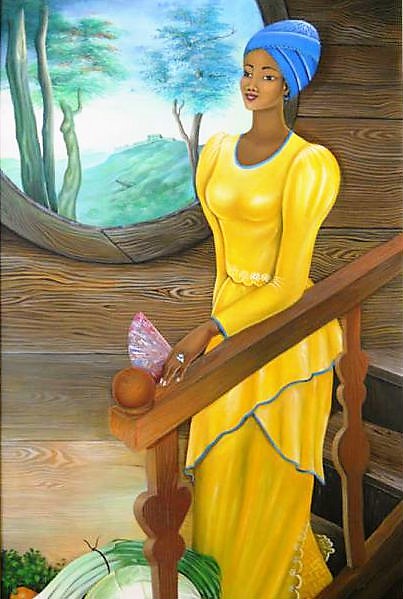

Mari Klè Erez
We want to know about Marie Claire Heureuse Félicité Bonheur, Dessalines’ wife.
We are told, she was so kind, so elegant, so gentle, so beautiful that even the murderers of her husband bowed down to her. The mulatto general, General Petion, who became President of Haiti after the assassination of Jean Jacques Dessalines, actually wrote to Dessalines’ wife, Marie Claire Heureuse, to tell her not to worry she would be the “adoptive spouse” of the nation and taken care of by the nation, for life. (See, Three Historical Documents on Dessalines’ Assassination.)
Why did this woman, the wife of General Petion’s archenemy, deserve such notice, admiration, and accolades? Why? We want every Haitian child, every women in the world, to know more about Marie Claire Heureuse. The little history we know tell us that during the Haitian revolutionary war against colonialism, forced assimilation, the Triangular Trade, and slavery, Marie Claire Heureuse took care of the sick soldiers, of the prisoners of the Revolutionary War, that she rode out onto the battlefield and even the French stopped their canon firing while she ministered to the dying, the wounded on both sides of the battle.
It has been said that this black Haitian woman named Marie Claire Heureuse was the first Red Cross. The world needs to know more about this woman, this hero, her model for human interaction. We should want to teach our children that one of the greatest, fiercest warriors on planet Earth — the African warrior General Jean Jacques Dessalines — whose very name still scares the hell out of US/Euro writers and history scholars, still horrifies enslavers, tyrants and despots everywhere, that this man was taught how to fight and throw a knife by a woman named Toya and that he married a woman, a healer, a pacifist, who insisted he not bring his weapons inside their home and he lovingly complied with his beloved wife’s request. This, in a time and at a place where the First World War was happening in the world, where all the nations-of-power had converged on small Haiti to annihilate it and Dessalines’ weapon was his life. Who was this man! This beautiful woman, this wife, lover, nurse, herbal healer and pacifist?
STORY: Fela Kuti, Revolutionary Insurrectionist, Talismanic Afrobeat Pioneer
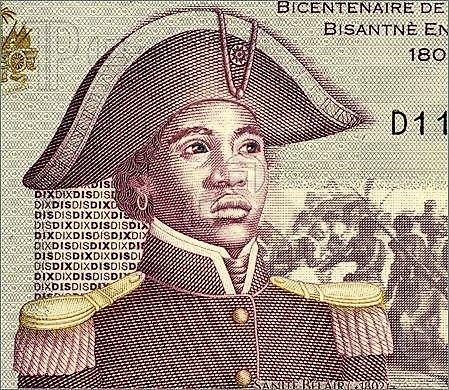

Sergeant Sanit Belè
What you read in history books on Haiti of hundreds of pages will mostly not tell you, what I’ve just put down in these few paragraphs about the people of Haiti. No. For, how many of us know greater details about Sergeant Suzanne Bélair, known as Sanit Belè, the fierce Haitian woman who taught the African warriors of Haiti how to die with dignity as the French executioner’s bullets shattered her to shreds?
Sanit, fell into the hands of the French. In the hope of saving her life, her husband, Charles Belair, voluntarily gave himself up. But his chivalrous action went for naught. The two, husband and wife, were sentenced to death by firing squad and executed the same day. When her hateful executioners tried to blindfold her because she was a woman, Sanit refused. She considered it an insult to a woman’s bravery and courage to be executed any differently than her husband. And, after watching unblinkingly while her husband was executed, Sanit Belè boldly presented her breast to receive the firing squad’s fatal shots.
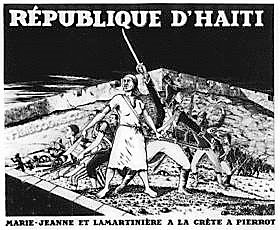

Mari-Jann Lamartinière
What more do we know about Marie-Jeanne Lamartinière, the fearless Haitian woman who stood tall and striking — wearing a long white floating dress, her waist knotted with a white sash, a red scarf around her head, saber strapped down her shoulders, and rifle in hand — as she urged forward to victory against the 12,000 French, the 1,000 outgunned and outnumbered indigenous Haitian army, on the bloody days at the famous and decisive battle of Crête-à-Pierrot?
It is rumored that after the murder of her husband, Brigade Commander Lamartinière, Marie-Jeanne became the lover of the native General, Dessalines. Not much else is recorded. We just have her picture in our minds from the various paintings and oral stories, our Haitian lullabies, depicting Marie-Jeanne in the midst of the inferno, a wounded soldier at her feet, or in the line of fire outside e Crête-à-Pierrot fort, fighting alongside her officer husband, Lamartinière.
Recovering an African Identity
There is so much we need to know in order to know ourselves today. In order to know we need not copy and paste another’s history of ourself and engraft that hatred in our soul. There is so much we need to recover from the destruction of African people, life, culture.
When I read the neocolonial chorus of ‘let’s move on,” of reconciling with lies and injustice, lwa Desalin pran mwen vre – I remember that the destruction of the African identity was built on bitter, twisted lies that must be unearthed for the hidden and lost African body to rise untainted; I remember that Dessalines did not copy and paste what was considered the height of human development where slavery, forced assimilation and colonialism was the rule. Dessalines created a nation that rejected Bourgeois Freedom, forced assimilation, colonialism, and enslavement of all types – physical, psychological, economic. Dessalines’ legacy has still to be fully put into black and white papyrus form, but the Haitian masses, thank goodness, have never become zombies, carbon copies or phonies.
STORY: Know Justice, Know Peace: 21 Generations
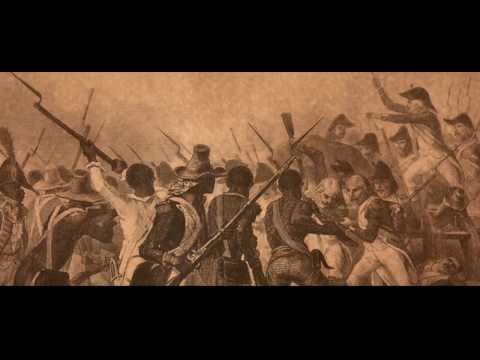
Watch this video on YouTube
Prof. Bayyinah Bello speaks on Jean-Jacques Dessalines the founding father of Haiti.
They’ve never had enough missionary/ecclesiastic schooling to be other than Dessalines’ descendants. They understand and live self-referral. That is why Haiti still exists, still struggles, still does not copy and paste. Se lan lekòl lavi nou pran leson. Se pa lan lespas nou apran. Se pa yon bagay ki soti o lè – yon bagay etranje – ki tonbe a tè ke nou ranmase kòm pa nou. Non. Ayisyen pran sa ki touprè yo, ki sòti lan yo, lan zantray yo, ki pou yo. Yo pa lan kopye kolè bagay esklavajist-kolyanist.
Haitians learn from the university of life. That’s where they get their lessons, their view of life, the world they create and extend. It’s not from some economic theory by some dead white guy overseas or, from Paul Collier, Bill Clinton, Ban Ki Moon, Condi Rice, Colin Powell or some Washington/Canadian/French think tank, foreign NGO or world renowned expert in humanitarian aid. No. Haiti’s masses mostly don’t even fight their arrogance; they smile, they agree, take what’s useful and then go about trying to live with what’s in their hands. Haiti still exists, despite two centuries of systemic, structural Euro-US impoverishment and destruction, because Haitians live with their environment and mold it towards the life-giving forces the best way they can. (See, Black is the Color of Liberty.)
Updated 21 February 2021




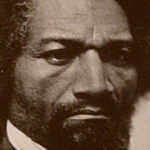








Pingback: Meet the warrior woman from Dahomey who trained Haitian revolutionary hero Dessalines – Face2Face Africa | The LR Zone
Pingback: Meet the warrior woman from Dahomey who trained Haitian revolutionary hero Dessalines – Mosi-Blog
Pingback: Meet the warrior woman from Dahomey who trained Haitian revolutionary hero Dessalines – bmorenews.com
Great So much we don’t know! Right. I will translate it into German.
Pingback: Adbaraya Toya - The Moor Enlightened Media
Pingback: Meet Adbaraya Toya - The warrior woman from Dahomey who trained Haitian revolutionary hero Dessalines - GOT KUSH TV
Pingback: Frederick Douglass on the 4th of July: Injustice and Cruelty
Pingback: Meet The Warrior Woman From Dahomey Who Trained Haitian Revolutionary Hero Dessalines | How Africa News
Pingback: Adbaraya Toya – die Lehrmeisterin des haitianischen Revolutionshelden Dessalines – Hispaniola News